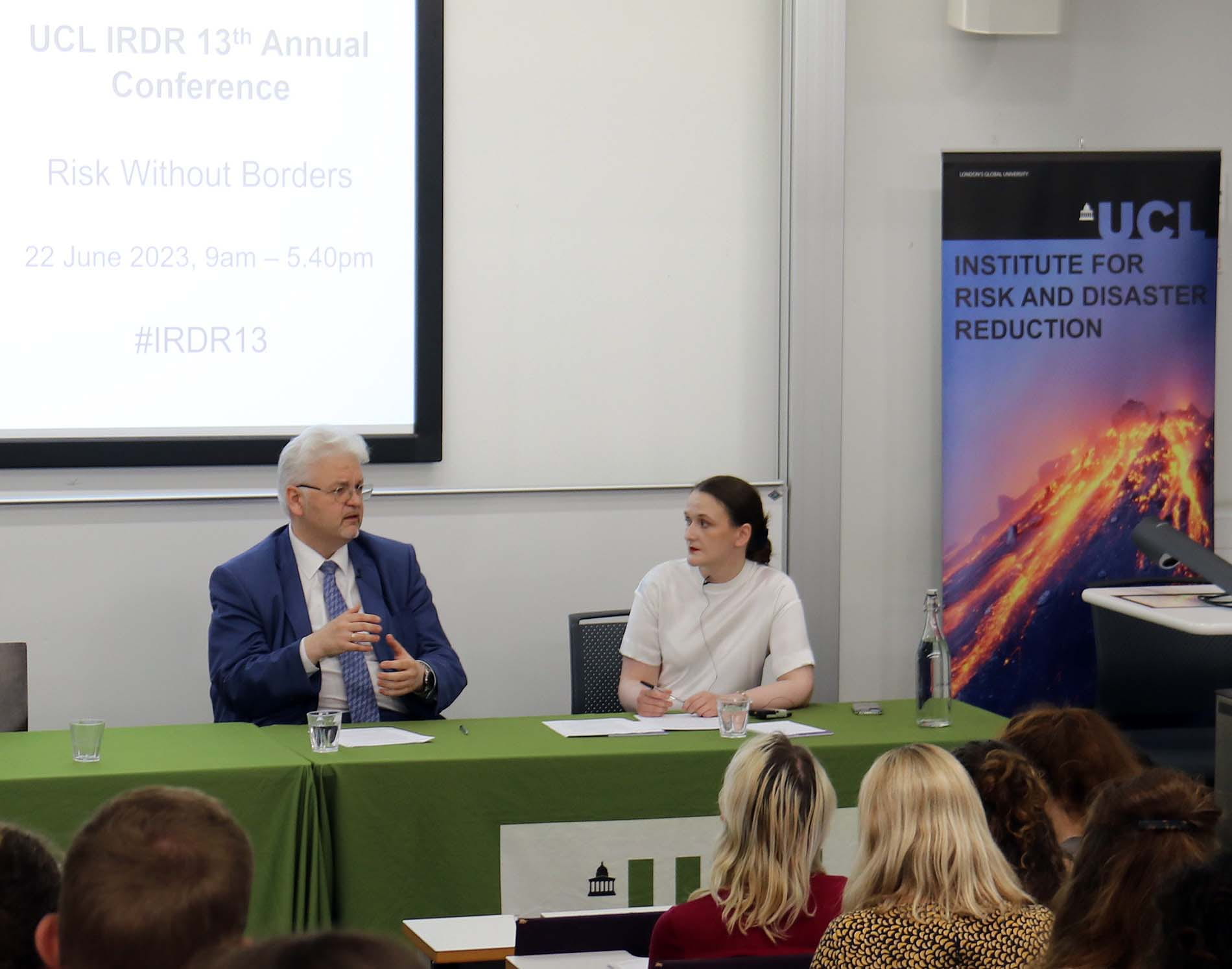What is the Future of the European Court of Human Rights?
By Jasmine Andean, on 13 July 2023
Reflections on the 13th IRDR Annual Conference’s Conversation with Judge Mykola Gnatovskyy
With governments around Europe engaging in increasingly aggressive anti-migrant rhetoric and Russia’s war of aggression in Ukraine, the success of the European project and the role of international bodies such as the European Court of Human Rights (ECtHR) has come into question.
With governments around Europe engaging in increasingly aggressive anti-migrant rhetoric and Russia’s war of aggression in Ukraine, the success of the European project and the role of international bodies such as the European Court of Human Rights (ECtHR) has come into question.
To explore this issue, the Institute for Risk and Disaster Reduction (IRDR) recently had the honour of hosting Judge Mykola Gnatovskyy of the ECtHR at the Institute’s 13th Annual Conference. The conversation was facilitated by IRDR’s Dr. Yulia Ioffe and explored the role of the ECtHR in the face of war, the distinction between international human rights law and international humanitarian law, and the role of the Court in safeguarding refugee rights.
The fate of the ECtHR itself may also come into question following the political developments of recent years.
When the European Convention of Human Rights was adopted in 1950, it was assumed that the Convention would apply only in times of peace, with international humanitarian law governing in times of armed conflict. However, the ECtHR has decided on the issues related to armed conflict, as seen, for example, from the case law on Chechnya and now again on Ukraine.
The ECtHR, set up in 1950 in the aftermath of World War II, was tasked with supervising human rights within the Europe and preventing war on the continent. Judge Gnatovskyy reminded the conference audience of some of the philosophical underpinnings surrounding the creation of the Court as a body safeguarding the human rights of individuals, following the belief that if the rights of individuals are truly respected, aggression simply cannot occur, as this would inherently violate these rights. In the practice of the Court, most cases have been brought by individuals in relation to alleged violations of their human rights. Of one thing Gnatovskyy was particularly clear: this liberal dream, unfortunately, has not come true in Europe.
The ECtHR is once again tasked with responding to a situation of warfare in Ukraine: a situation that the Court arguably was not designed to have jurisprudence over. Nonetheless, the ECtHR has accepted jurisdiction over claims arising in wartime, too. Thus, the Court has integrated concepts of international humanitarian law into the interpretation of the European Convention on Human Rights, despite theoretical insistence that international humanitarian law and human rights law are separate. Although initially the ECtHR incorporated international humanitarian law into its practice subtly, without explicitly citing the 1949 Geneva Conventions, for example, the Court has since more openly acknowledged that international humanitarian law is being taken into account in international human rights cases.
Judge Gnatovskyy’s astute insights left me with several questions about the fate of the ECtHR, the legal disciplines of international human rights law, and international humanitarian law, as well as the wider fate of the European project. It is clear that international humanitarian law will continue to be incorporated into the Court’s practice, but questions remain about the extent to which this will take place, and what the consequences will be for other international courts around the world and for the wider discipline of international law.
The fate of the ECtHR itself may also come into question following the political developments of recent years. It seems that the Court has failed at the task that it was set out to complete: to prevent the war in Europe. With the death of the dream of a Europe free from war, the role of the international institutions safeguarding this dream is uncertain. Moreover, rising populist nationalism and aggressive anti-migrant rhetoric within several European countries may pose a further threat to the Court, with the UK for example threatening to leave the Court, including following an issuance of interim measures preventing the UK government from removing asylum seekers to Rwanda. If the UK, historically a cornerstone within the Court, does follow through with these threats, the authority and power of the ECtHR will be considerably undermined, and its future may be called into question.
In his closing remarks of the conversation, Judge Gnatovskyy left the conference with a combination of optimism that a change for the better is possible and bleakness in the face of the war in Europe:
“When there is an understanding that things must change, they will change; and it will be too late. International law is usually one war too late.”
Jasmine is an undergraduate student in UCL IRDR Year 2021-2024 on the Global Humanitarian Studies programme.
Reach out: jasmine.andean.21@ucl.ac.uk
Read more IRDR Blogs
Follow on Twitter @UCLIRDR
 Close
Close


